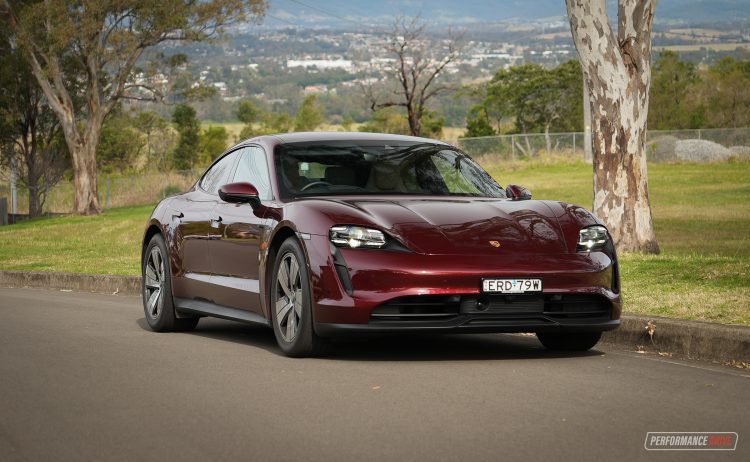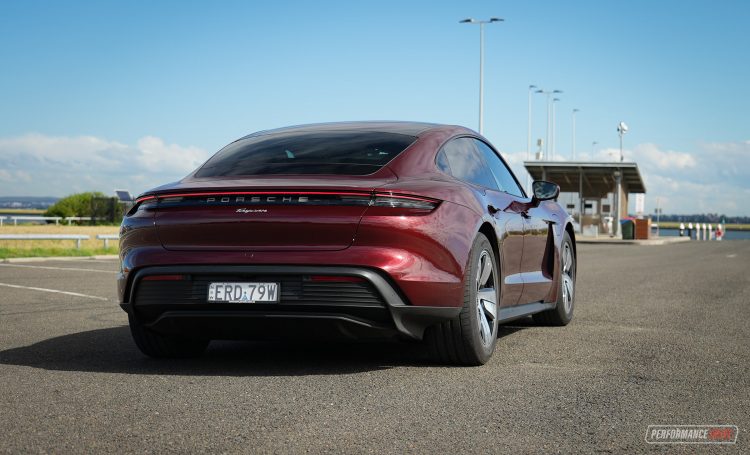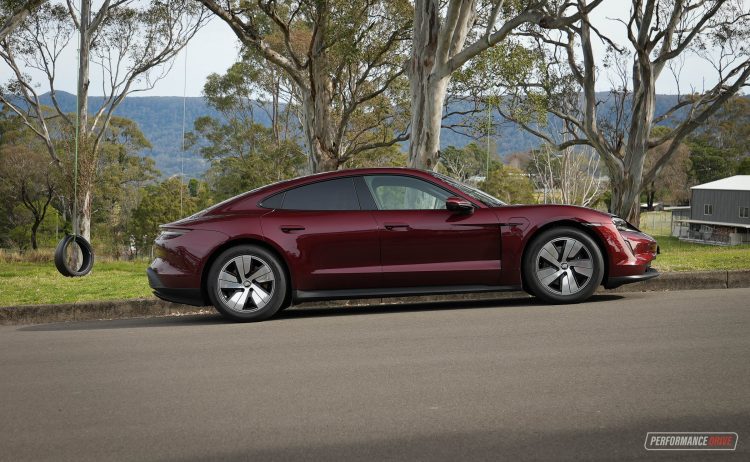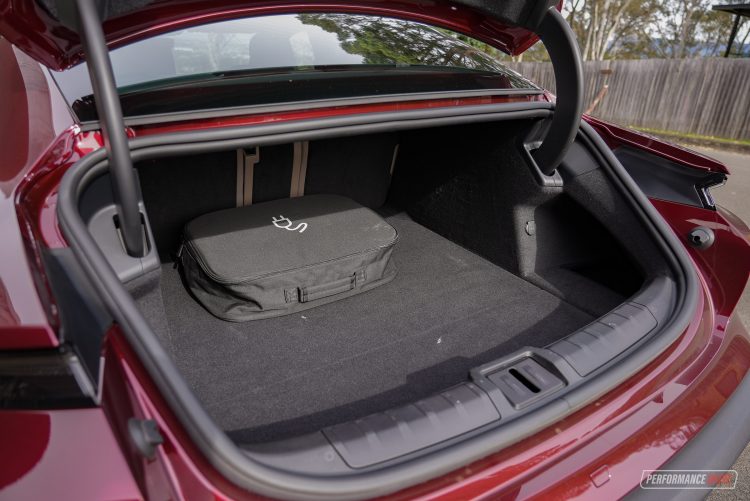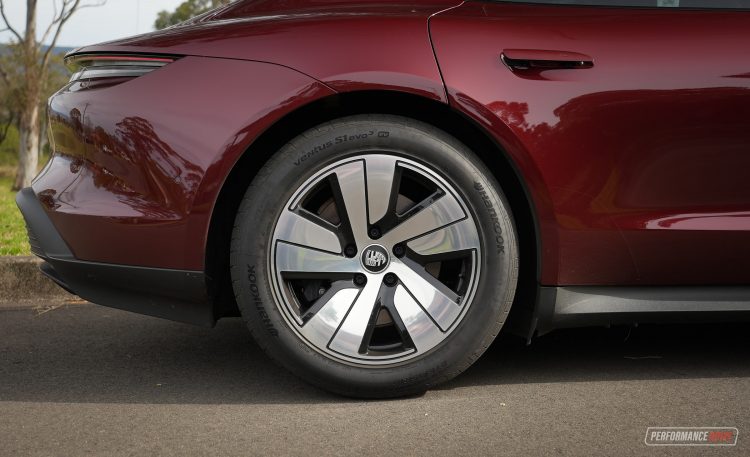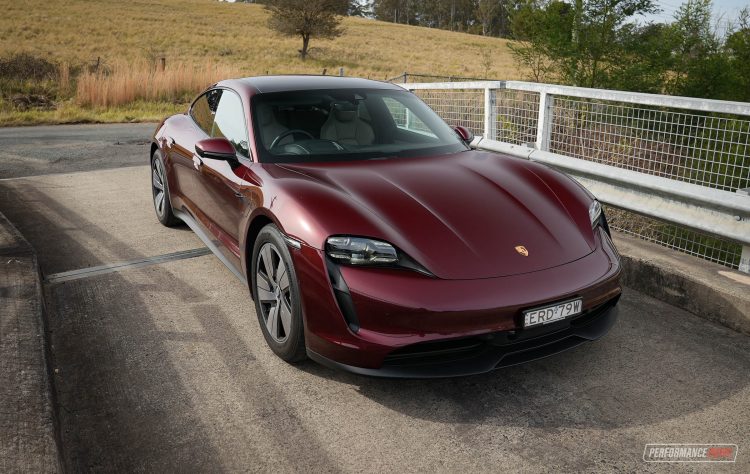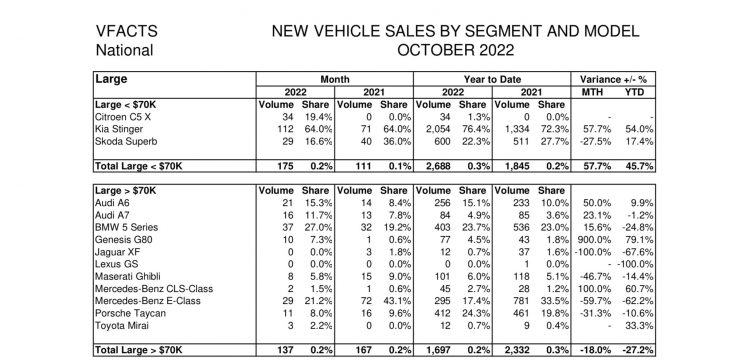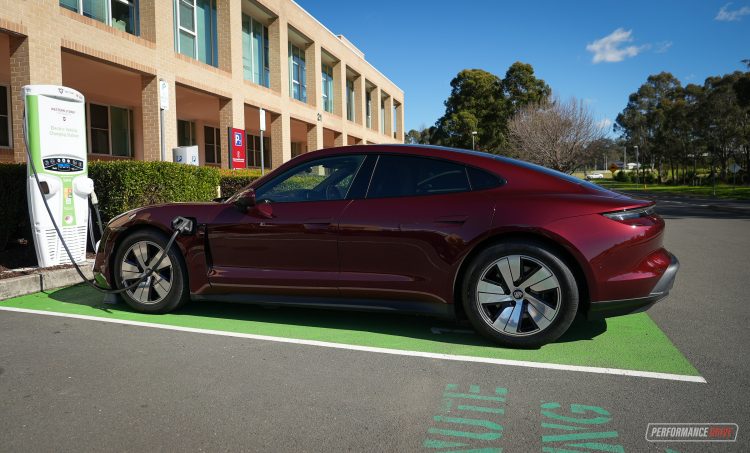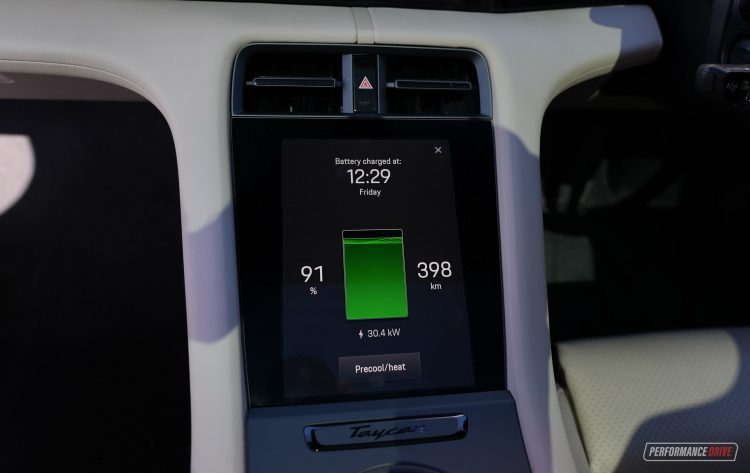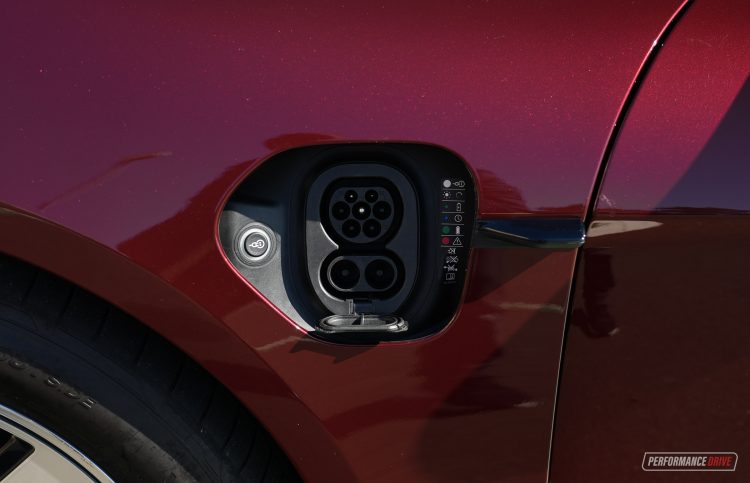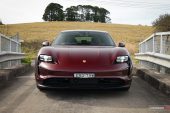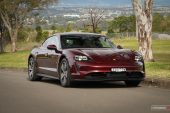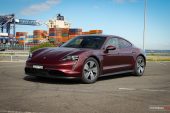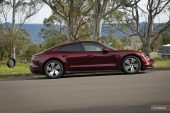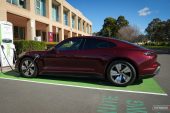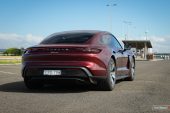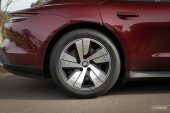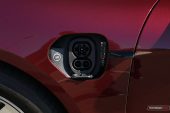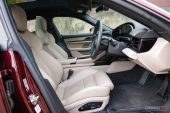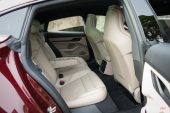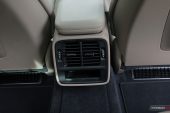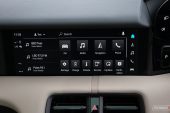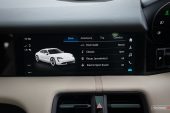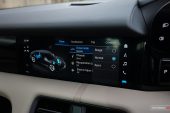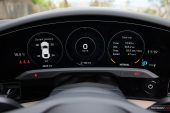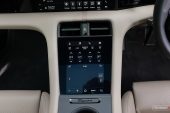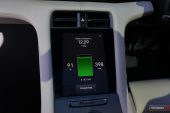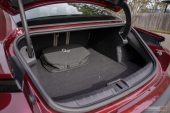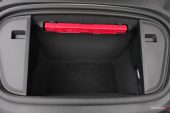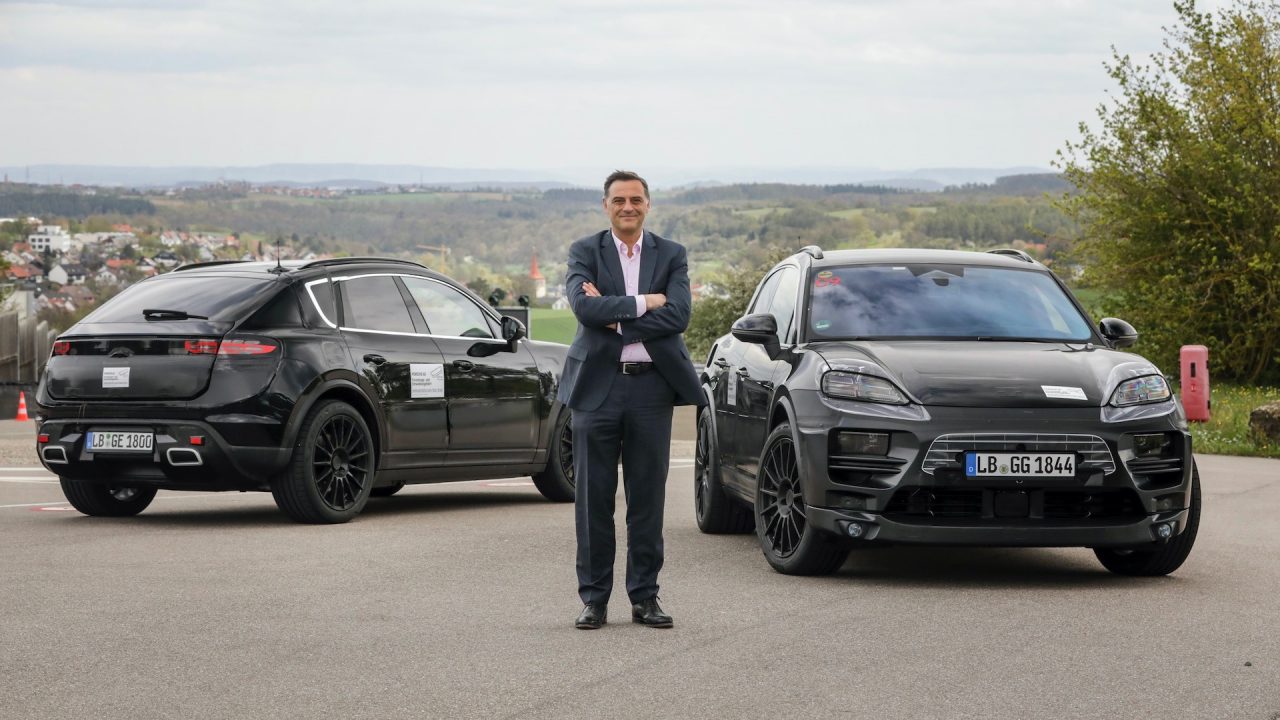By now you’ve probably heard of or seen the stunning Porsche Taycan. It’s Porsche’s first dedicated electric vehicle, and it has become one of its most popular models. You can now get it in a wide variety of trim grades and with varying levels of performance and range, so the model line is more tempting than ever. We thought we’d sample the absolute base spec for this review to see if it still carries plenty of that trademark Porsche DNA.
The entry grade is the only rear-wheel drive model in the range, featuring a single electric motor at the back that generates 240kW, or, up to 300kW when overboost/launch control is engaged. Torque peaks at a fairly low (for this size/class of vehicle) 345Nm.
However, if you’d like more of a taste of the performance of the upper models Porsche does offer the ‘Performance Battery Plus’ system, increasing battery capacity from the standard 79.2kWh to 93.4kWh (as tested). This sees outputs climb to 280kW/350kW and 357Nm. The range also grows from 403km to 462km.
Prices start from $158,100, plus $12,020 for the big battery (excluding on-road costs). There is no doubt it is an expensive car but as we’ve pointed out in other Taycan reviews, it does undercut the equivalent combustion-engine model from Porsche. In this case the base Panamera V6 RWD, which starts from $207,000 (although technically not in the same vehicle class).
2022 Porsche Taycan RWD – THE SPECS
[column width=”47%” padding=”6%”]Motor: Single AC synchronous
Battery: 79.2kWh or 93.4kWh with Performance Battery Plus option
Output (Performance Plus battery): 300kW (350kW overboost) / 357Nm
Transmission: Two-speed rear axle
Drive type: Rear-wheel drive
Wheels: F: 19×8.0, 225/55 R: 19×10, 275/45
ANCAP: Not tested
Weight: 2050kg
Power-to-weight: 5.85:1 (kg:kW)
Official range: 462km (403km with standard 79.2kWh battery)[/column] [column width=”47%” padding=”0″]Max charging capacity: Optional 22kW AC, 270kW DC
0-60km/h: 3.06 seconds*
0-100km/h: 5.28 seconds*
0-200km/h: 15.48 seconds*
60-110km/h: 2.89 seconds*
1/4 mile: 13.30 seconds at 185.1km/h*
Max acceleration: 0.793g
100-0km/h braking: 3.03 seconds at 36.83 metres*
Max deceleration: -1.207g
Decibel at idle (on standby): 24*
Peak decibel at 60-100km/h: 76*
Priced from: $158,100[/column][end_columns]
* Figures as tested by PerformanceDrive on the day. Factory claims may be different
2022 Porsche Taycan RWD – THE PACKAGE
The success of the Taycan speaks for itself. Last year it was the second most popular Porsche in the showroom in Australia, reporting 531 deliveries, behind 2328 Macans, but ahead of the 911 (428 units), Cayenne Coupe (435) and Cayenne wagon (402). It also outsold the Panamera (48) by a massive margin.
Sales so far this year are not doing as well, likely due to semiconductor shortages, or at least partly. But it is the number one best-seller in its class, against the Audi A6, BMW 5 Series and Mercedes E-Class and co. As of the end of October, 412 units have been newly registered, according to VFACTS. That’s down 10.6 per cent on the same period last year. The segment, though, is experiencing a 27.2 per cent downturn.
Even in base spec it looks very sleek and sporty, with plenty of Porsche’s trademark design helping it stand out on the road, such as the bulbous front wheel arches and fat rear haunches. We love the view from the rear especially, with an elegant LED taillight strip running across the back. There’s also extensive aero treatment and attention to detail, including a pop-up rear spoiler, chunky diffuser, and a completely flat underbody.
One of the telltale signs that this is the entry model is a set of flat, dome-like 19-inch alloy wheels. Instead of the usual outright performance tyres, these feature EV-focused Hankook Ventus S1 EVO 3 EV tyres. According to the tyre manufacturer, they’re designed for battery vehicles, offering reliable traction in the dry and wet, and reduced rolling resistance for optimum efficiency. Lightness is also a key characteristic.
The interior is pretty much just like the upper-spec models. And you can of course option this to the brim to make it a properly pampering environment, too. This example showcases a lovely tan (called Chalk Beige) leather upholstery, which extends to the dash and door trims, with soft black contrasting fixtures.
The driving position is so perfect you just want to sit in here and drive all day long. Even the steering wheel is spot on in terms of size, feel and proximity. Minimal physical controls help to provide a clean and clutter-free layout, with only the crucial buttons on the steering wheel. Of course, every aspect expresses elite manufacturing quality and precision workmanship.
Rear passengers get similar sporty-contoured seats on the outside as those in the front, with decent headroom and legroom. Although, it is quite a low vehicle and the roofline does swoop down towards the back, so you do have to mind your head getting in. We think at this price point full climate control should be standard in the back, but instead you only get climate vents as standard (four-zone is a $1720 option).
Boot space is measured at 407 litres, which is more than what you get in most sports cars. But, if you compare it to some large sedans in this specific class it doesn’t stack up so well. Fortunately, there is a second boot up front, under the bonnet, offering 84L. It’s actually a very useable space too, capacious enough for a carry-on luggage bag and some.
2022 Porsche Taycan RWD – THE DRIVE
As a result of the single motor this is the lightest weight Taycan in the range. However, the current state of battery technology unfortunately means batteries are still very heavy. As such, this weighs 2050kg. Agility out on the road seems unencumbered though, with very accurate and beautifully-weighted steering easily setting the standards for this class.
Staggered tyre sizes are featured for the front and rear, with 225/55 on the front and 275/45 on the back. Most German carmakers in particular apply staggered widths as it is known for improving handling balance while leaving plenty of control and adjustability to the driver, compared with an even or square setup. It’s amazing how much traction is available here, even during launch control with an instant hit of 350kW going to the rear.
There is some compromise in driving feel over the upper-spec models in our opinion, mainly as the mechanical suspension (coil springs) does not have the dynamic breadth of the air suspension setup fitted to all models above this. However, we must reiterate, this is a superb coil-spring package; it’s simply a fact that the air suspension system that Porsche has devised for the Taycan is even better. It is an option on the base model, priced from $4540. We think it could be particularly important for buyers in Australia, as we have variable and often poorly-surfaced roads.
As a result, the handling does feel a smidge inferior, especially when encountering bumps. Even so, the lateral grip and g-force this machine can find around corners is truly incredible. It rails around, completely flat and secure, with not only superior confidence to any other competitor, it’s also very driver-engaging and enjoyable; it encourages you to take the windy route. With rear-wheel drive you can also get on the power early and steer with the rear, to some degree.
In terms of straight-line performance, this is impressively quick. And thanks to the two-speed gearbox in the rear axle, it does not run out of grunt in the top end like most EVs. It just keeps pulling. In fact, acceleration off the mark, mid-range performance and top end speed are all ahead of the class. Porsche claims 0-100km/h in 5.4 seconds (it doesn’t specify if this is with or without the Plus battery option), with 0-200km/h coming up in 17.6 seconds or 16.5 seconds with the Plus battery option.
On a private road with our Racelogic Vbox Sport we clocked 0-100km/h in 5.28 seconds in this test vehicle, with 0-200km/h conquered in just 15.48 seconds. The quarter mile was achieved in 13.30 seconds at 185km/h. These are not weak times at all, especially the quarter mile and 0-200, which we describe as ‘power sprints’ – only cars with serious output can produce good results like this.
We checked out every one of its rivals as listed in VFACTS, and not one entry model can beat this across the official 0-100km/h sprint. The closest entry model is the Maserati Ghibli 2.0T which offers a claimed time of 5.7 seconds. The Mercedes-Benz CLS-Class is not technically offered in an entry grade, only the AMG 53. It is quicker, with an official time of 4.5 seconds. But we can hardly call that an entry grade model being from AMG division.
So, how long does it take to recharge? Using the standard 11kW AC system the battery can go from 0-100 per cent in about 8 hours, or 9 hours with the bigger battery. Using a 50kW DC charger, which is perhaps the most common public charger type in Australia at the moment, the battery can go from 5-80 per cent in 93 minutes with the Plus battery.
Or, using an ultra-rapid charger the Taycan can gulp in up to 270kW, requiring just 22.5 minutes to go from 5-80 per cent. However, in our experience, ultra-rapid chargers don’t always provide maximum power. Porsche explains:
“To achieve the optimum value of the specified DC charging time for a charge status increase from 5 to 80 per cent, a CCS fast-charging pedestal with above 270kW and above 850V is required, as well as a battery temperature of 30–35°C. The charging status when commencing charging must not exceed 5 per cent. For physical and chemical reasons, the charging speed decreases as the battery approaches its full capacity. Therefore, it usually makes sense to use fast DC charging to charge the battery up to 80 per cent or up to the required range.”
It’s not recommended to repeatedly use an ultra-rapid CCS2 style of charger either. Slower charging prolongs the battery’s performance. Porsche says: “The predominant use of CCS fast charging pedestals leads to a long-term increase in charging times. For regular fast DC charging, we recommend a maximum charging output of 50kW.”
The other aspect to consider when using public stations is if the station is vacant and if you have the time to wait for other users. And, if the charger is operational. As an example of what you could expect, I live in Sydney and have four public stations within around 20 minutes of my house. Two are 50kW systems (single plug), and the other two are 22kW systems (twin plug) but require you to bring your own Type 2 cord. And so far this year at least two of these stations have been out of order for at least four weeks at a time, and on multiple occasions.
In other words, we would be hesitant in fully depending on the current charging infrastructure in Australia right now. Instead, we’d strongly recommend getting a wallbox installed at home, or, if you’re in the process of building a new home, consider getting 3-phase power to your house so you can set up a 22kW AC charger. Then you could quite easily recharge your EV within about 4-5 hours, or take in a generous top-up in about an hour or so. Some EVs will only take in a maximum of 11kW in AC power, but the Taycan can be optioned to support 22kW AC, for $3500 in this model’s case.
2022 Porsche Taycan RWD – THE VIDEO
2022 Porsche Taycan RWD – THE VERDICT
The base spec feels every bit as special as the upper models, and the exterior and interior are just as spectacular, with build quality remaining at the top of its class. Visually, only the aero-style alloy wheels give the game away – but you can option them up and essentially create a package that looks just like the high-ranking variants, if that matters.
However, if you can dig a bit deeper and conjure up another $20-40k you could step into the Taycan 4 (from $179k) or 4S (from $197k) and experience the phenomenal air suspension system, and treat yourself to twin-motor power. Having all-wheel drive really boosts the Taycan’s overall grand touring capability and performance in our opinion.
On the other hand, the base model offers very alluring characteristics, too. We experienced greater efficiency in this base RWD model compared with other AWD versions that we’ve tested, for example. If you drive carefully, it is possible to achieve the official range of 460km. It’s also possible (and easier) to maintain a steady range with casual driving compared with the twin-motor setups.
We can also understand and appreciate the fact that some of the more loyal Porsche fans out there might prefer the mechanical feel of the base suspension and rear-wheel drive dynamics. Perhaps the best feat of all is that you have a huge variety of flavours and powertrain levels to choose from with the Taycan, which is exactly in line with Porsche’s heritage.
[column width=”47%” padding=”6%”]PROS:
– Gorgeous design, inside and out
– RWD driving dynamics; lightest-weight variant in the lineup
– Single motor offers more dependable range than dual-motor setups, better efficiency
– Standard coil spring suspension feels raw and traditional
– Flawless build quality
[/column] [column width=”47%” padding=”0″]CONS:
– Peak torque figure is low for this class
– Coil spring suspension not as compliant or as dynamic as air suspension option
– Pricey options[/column][end_columns]
As always, if you’re thinking about buying a new car don’t forget to click here to speak with our car buying specialists.
